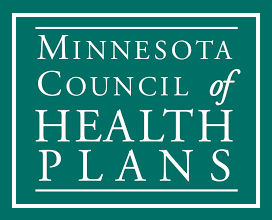Center for Community Health
Project Goals
To share data and processes to identify health needs and implement innovative approaches to advance community health, well-being and equity.
Project Description
Since its founding, the Center for Community Health (CCH) has achieved several objectives. The Assessment and Alignment Committee (AAC) has developed a set of core indicators for member organizations to use when completing community health assessments. The AAC also developed a data dictionary to accompany the data indicators, and hosted a metro region community dialog in October 2017 using the Forces of Change Assessment model to guide the discussion.
The Center for Community Health Steering Committee identified mental health as the focus area for the Collective Action, making a Collective Impact (CACI) Committee. Mental health was identified on each member’s community health assessment at the founding of CCH and continues to be relevant to each member’s constituency. The CACI Committee identified four evidenced-based mental health promotion programs to focus the group’s collective efforts: Make it OK, Mental Health First Aid, Psychological First-Aid and Question/Persuade/Refer (QPR). The committee collectively promotes these programs, including an annual effort to combine resources and collectively promote the four programs and anti-stigma messages for May Mental Health Month.
The CACI Committee then created a conceptual model called “The Zone of Mental Health Stability,” which shows that people with and without a mental illness diagnosis can be maintained within the Zone, even when experiencing emotional ups and downs. The Zone of Mental Health Stability plots the four evidence-based programs to their relevant locations within the Zone.
In 2018 and 2019, the CACI Committee encouraged each member organization to plot its own programs on the Zone. This was designed to help foster discussions within our own organizations and between organizations, as well as to raise awareness of the programs and identify programming gaps. In 2019, the member health plans collectively created two Zones of Mental Health Stability—one identifying the relevant services covered by the health plans, and one highlighting each health plan’s programs to positively impact the mental health of our members and employees. Each of the health plan Zones are posted on the Minnesota Council of Health Plans website at mnhealthplans.org.
Entities Involved
Local public health agencies involved include Anoka County, Carver County, City of Bloomington, City of Edina, City of Richfield, Dakota County, Hennepin County, Minneapolis Health Department, St. Paul-Ramsey County, Scott County and Washington County.
Nonprofit health plans involved include Blue Cross Blue Shield/Blue Plus of Minnesota, HealthPartners, Medica, Hennepin Health, PreferredOne, UCare and the Minnesota Council of Health Plans.
Not-for-profit hospitals and health systems involved include Allina Health, Children’s Hospitals and Clinics, HealthEast & Fairview, HealthPartners, Hennepin County Medical Center, Maple Grove Hospital, North Memorial and the Minnesota Hospital Association.
How Health Plans Support the Project
Health plans are dues-paying members and have representatives on the Executive, Steering, Finance and Collective Action Committees, along with member organizations from the other sectors.
Additional Information
Key deliverables and community resources include:
- The Zone of Mental Health Stability: original conceptual model and health plan–covered services and direct programs.
- Shared Community Health Indicators: common measures collected by all member entities collecting needs assessment data. The list of indicators is accompanied by an extensive Data Dictionary.
Questions?
Annie Halland


